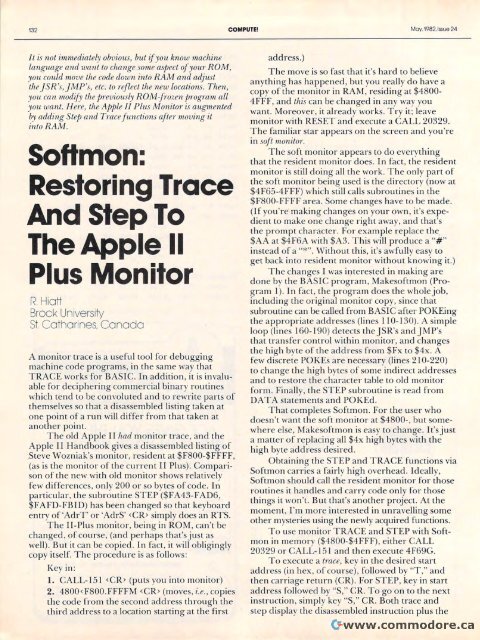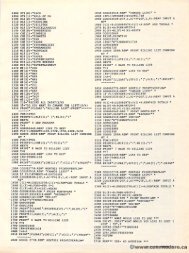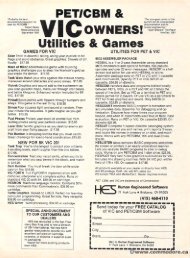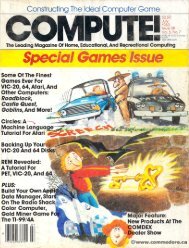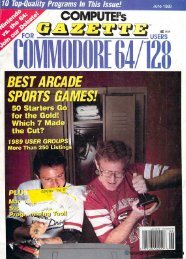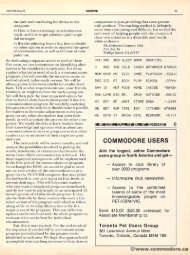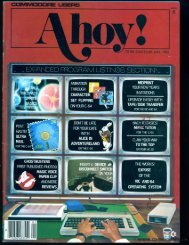Create successful ePaper yourself
Turn your PDF publications into a flip-book with our unique Google optimized e-Paper software.
132 COMPUTEI COMPUTE! May. 1982, I:>sue Issue 24<br />
fl is not im.mediatel)1 obvious, but if you know macll.1:ne<br />
// is not immediately obvious, but if you know machine<br />
language {/.'lui and waul, want to change some aspeci aspect of your yow' ROM,<br />
yO1/. you could move II/ove the Ih e code down ;nto into RAM and adJusl<br />
adjust<br />
the} JSR's.fMP's, 's, } M elc. etc. 10 to refleci reflect the new 10ca.I;om. locations. Then,<br />
you can modify the previously IJrev;ously ROM-frozen frown program IJrogram ail all<br />
you want. Here, H the Apple 11 II Plus Plu.s Monitor Manila,· is augmenled<br />
augmented<br />
by adding Slep Step and Trace functions funcliom afler after moving il it<br />
into RAM.<br />
into RAM.<br />
Softmon:<br />
Restoring Trace<br />
Restoring Trace<br />
And Step To<br />
The Apple II<br />
Plus Monitor<br />
Plus Monitor<br />
R. Hiatt<br />
R. Hiatt<br />
Brock University<br />
St. Catharines, Canada<br />
Sf Catha rines, Canada<br />
A monitor trace is a useful tool for debugging<br />
machine code programs, in the same way that<br />
TRACE works for BASIC. In addition, it is invalu<br />
luable<br />
for deciphering commercial binary routines<br />
which tend to be convoluted and to rewrite parts of<br />
themselves so that a disassembled listing taken at<br />
one point of a run will differ from that taken at<br />
another poin t.<br />
another point.<br />
The old Apple II had monitor trace, and the<br />
Apple II Handbook gives a disassembled listing of<br />
. Steve Wozniak's monitor, resident at $F800-$FFFF,<br />
$F800-5FFFF,<br />
(as is the monitor of the current I I Plu s) . Compari<br />
(as is the monitor of the current II Plus). Compari<br />
son of the new with old monitor shows relatively<br />
few differences, onlyy 200 or so bytes of code. In<br />
particular, the subroutine STEP ($FA43-FAD6,<br />
($FA43-FAD6?<br />
$FAFD-FBID) SFAFD-FBID) has been changed so that keyboard<br />
entry of'AdrT' or 'AdrS' simply does an RTS.<br />
entry of 'AdrT' or 'AdrS' simply does an RTS.<br />
The 11 II -Plus- Pi 11 s monitor, being g in ROM, , can't be<br />
changed, of course, (a nd perhaps that's just as<br />
changed, of course, (and perhaps that's just as<br />
well). But it cann be copied. In fact, it will obligingly<br />
copy itself. The procedure is as follows:<br />
copy itself. The procedure is as fo llows:<br />
Key in:<br />
1. CALL-151 lS I (puts you into monitor)<br />
2. 4800


